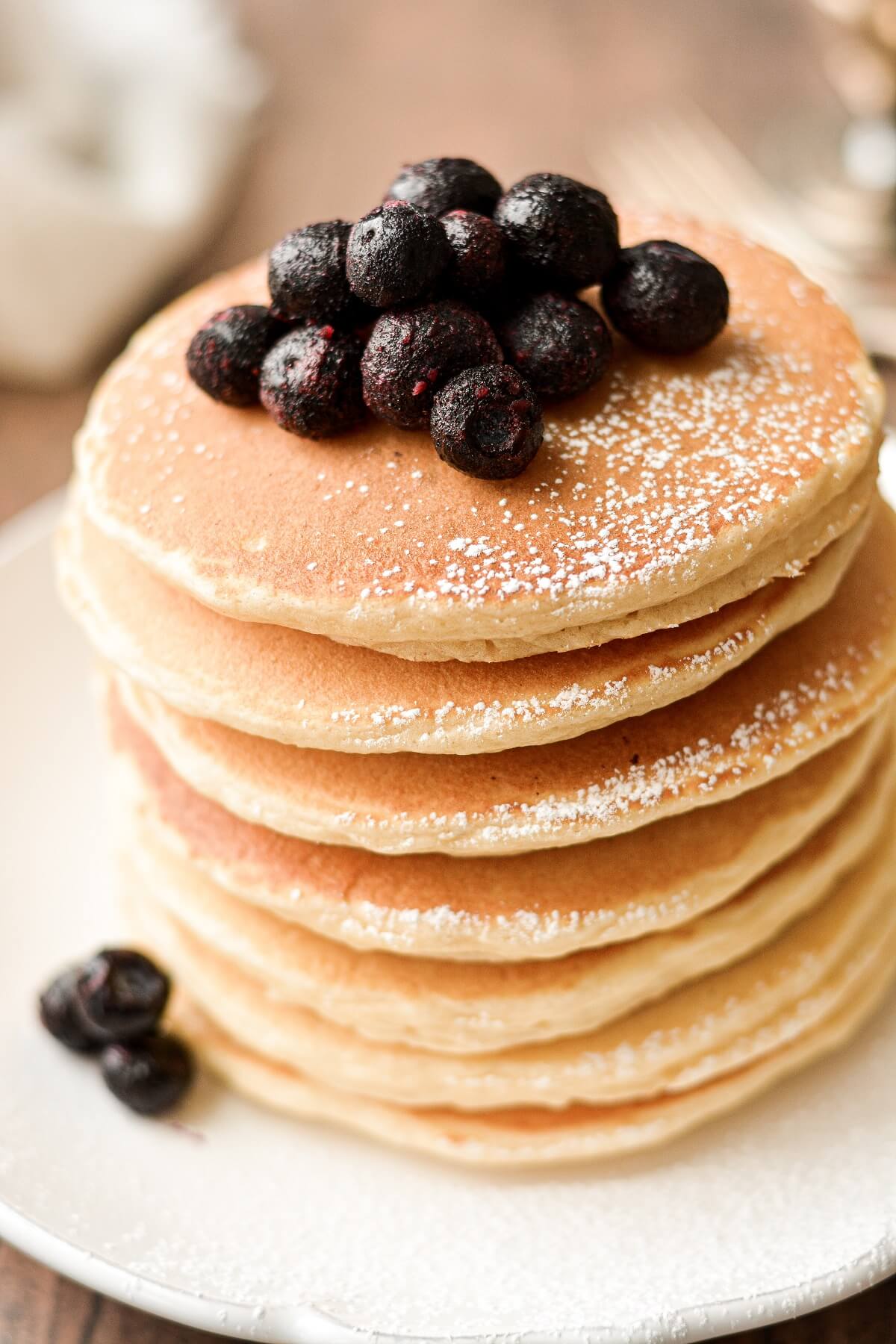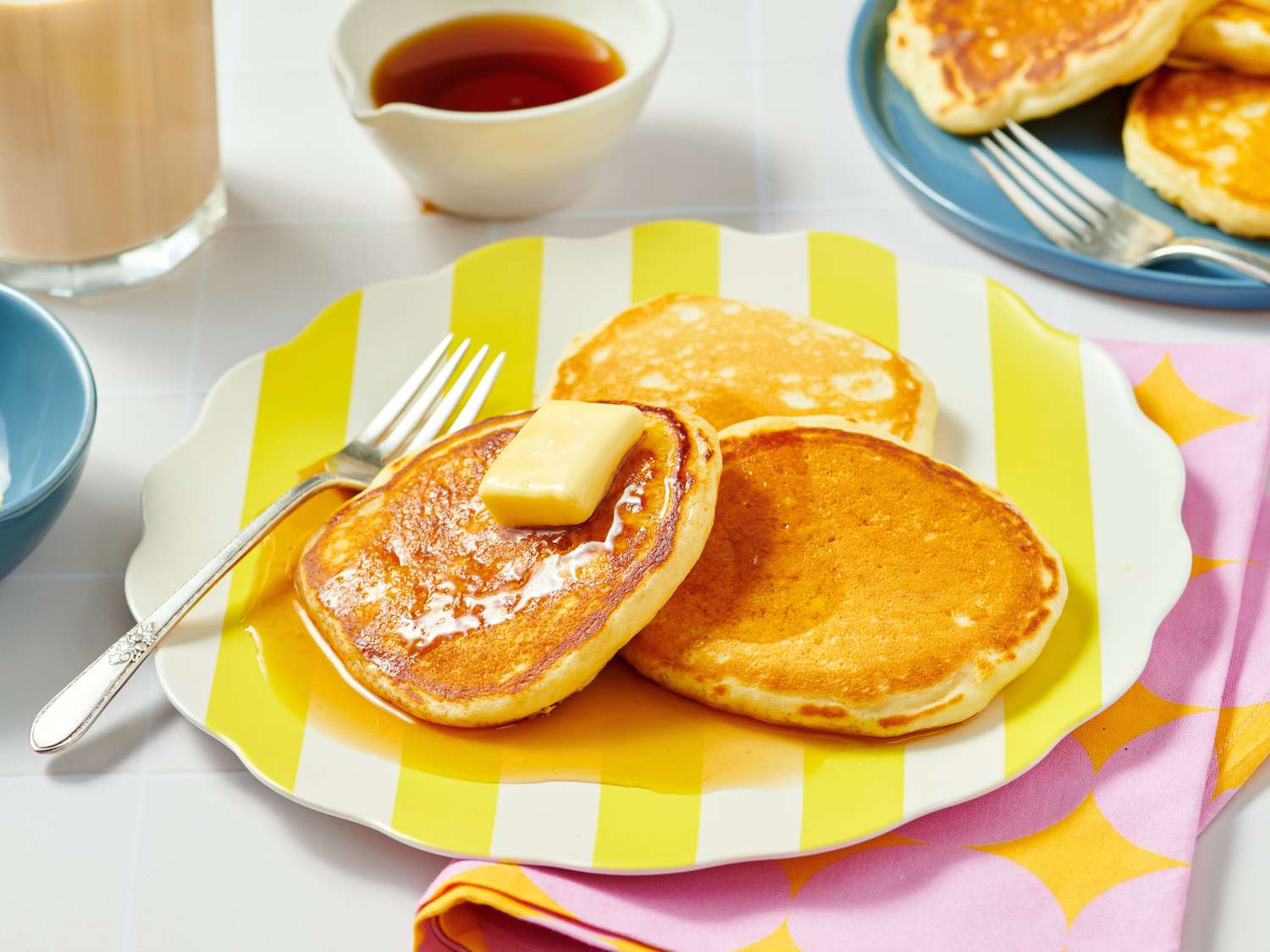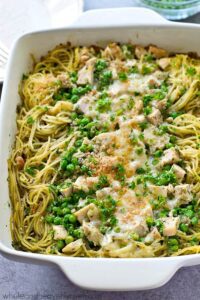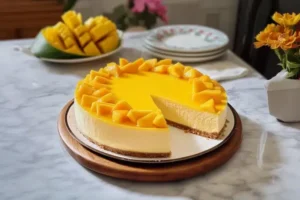Fluffy Pancakes a Breakfast Classic is a delicious recipe that combines amazing flavors and textures.
There’s something truly magical about a stack of fluffy pancakes gracing your breakfast table. These cloud-like delights have been a breakfast staple for generations, offering comfort and satisfaction in every bite. The perfect pancake should be light and airy with a tender crumb, golden brown exterior, and just the right amount of sweetness to complement your favorite toppings.
What separates exceptional pancakes from merely good ones lies in the technique and understanding of the science behind them. The fluffiness comes from the reaction between baking powder and the acidic components in the batter, creating tiny air bubbles that expand during cooking. Overmixing is the enemy of fluffy pancakes as it develops gluten, resulting in tough, dense pancakes rather than the light, airy texture we desire.
The History of Pancakes
Pancakes have a rich history dating back over 30,000 years. Evidence suggests that prehistoric people may have eaten pancake-like foods made from ground grains and nuts mixed with water and cooked on hot stones. The ancient Greeks and Romans enjoyed pancakes sweetened with honey, while Elizabethan English people flavored theirs with spices, rosewater, sherry, and apples.

In America, pancakes became popular during colonial times when settlers borrowed Native American techniques for grinding corn and making batter. The invention of baking powder in the 19th century revolutionized pancake making, creating the light, fluffy texture we know today. Pancakes have since evolved into a global phenomenon with variations like French crêpes, Russian blini, Japanese okonomiyaki, and Ethiopian injera.
The Science of Fluffiness
Understanding the chemistry behind pancake fluffiness will transform your breakfast game. Baking powder is a double-acting leavener, meaning it creates gas bubbles twice: first when mixed with liquid, and again when exposed to heat. This dual action gives pancakes their lift and airy texture.
The protein in flour forms gluten when mixed with liquid. While some gluten development is necessary for structure, too much makes pancakes tough. This is why minimal mixing is crucial. The fat in the recipe (butter or oil) coats the flour proteins, limiting gluten formation and contributing to tenderness. Eggs provide structure through coagulated proteins and emulsification, helping to create a uniform batter.

Ingredient Selection Guide
Flour: All-purpose flour works perfectly for pancakes. For lighter texture, you can substitute 1/4 cup with cake flour. Whole wheat flour can be used but will result in denser pancakes – consider using half whole wheat and half all-purpose.
Leaveners: Fresh baking powder is essential. Test yours by mixing a teaspoon with hot water – if it doesn’t bubble vigorously, replace it. Some recipes include baking soda for additional lift when using buttermilk.
Dairy: Whole milk provides the best flavor and richness. Buttermilk creates tanginess and tenderness due to its acidity. For dairy-free options, almond milk, oat milk, or soy milk work well.

Eggs: Large eggs at room temperature incorporate better into the batter. For vegan pancakes, use flax eggs (1 tbsp ground flax + 3 tbsp water per egg) or commercial egg replacers.
Fat: Melted butter adds wonderful flavor, but vegetable oil works well too. Browned butter adds a nutty, complex flavor that elevates ordinary pancakes to extraordinary.
Technique Mastery
Mixing: Combine dry and wet ingredients separately first, then gently fold them together. Stop mixing when you still see some flour streaks – the batter will continue to combine as it rests.

Resting: Letting the batter rest for 5-10 minutes allows the flour to fully hydrate and the gluten to relax. This results in more tender pancakes. The baking powder also begins its first activation during this rest.
Temperature Control: Preheat your cooking surface properly. A drop of water should skitter across the surface before adding batter. Too hot, and pancakes will burn outside while remaining raw inside; too cool, and they won’t develop that beautiful golden color.
Portioning: Use a 1/4 cup measure for consistently sized pancakes. Pour from the tip of the measure rather than the side for perfect circles. Leave enough space between pancakes for easy flipping.
Advanced Flavor Variations
While classic pancakes are delightful, experimenting with flavors can make your breakfasts exciting. Try these variations:
Lemon Blueberry: Add zest of one lemon and 1 cup fresh blueberries to the batter. The acidity of lemon brightens the flavor profile.
Chocolate Chip: Stir in 1/2 cup mini chocolate chips. Use dark chocolate for a less sweet option.
Spiced Pumpkin: Add 1/2 cup pumpkin puree, 1 tsp pumpkin pie spice, and reduce milk by 2 tablespoons.
Apple Cinnamon: Fold in 1 grated apple (peeled) and 1 tsp cinnamon for a fall-inspired treat.
Whole Grain: Substitute 1 cup whole wheat flour and add 2 tbsp ground flaxseed for added nutrition.
Topping Innovations
Move beyond basic syrup with these creative topping ideas:
Fruit Compotes: Simmer berries with a little sugar and lemon juice until broken down into a saucy consistency.
Nut Butters: Warm peanut, almond, or cashew butter with a splash of milk for a protein-packed topping.
Yogurt Sauce: Mix Greek yogurt with honey or maple syrup and a pinch of cinnamon.
Lemon Curd: Spread store-bought or homemade lemon curd between pancake layers.
Whipped Cream: Elevate with flavored whipped cream – add citrus zest, cocoa powder, or instant espresso.
Perfect Pairings
Complete your pancake breakfast with these complementary dishes:
Protein: Crispy bacon, breakfast sausage, or ham provide savory contrast to sweet pancakes.
Eggs: Scrambled, fried, or poached eggs add protein and richness.
Fresh Fruit: A fruit salad or simple sliced fruit balances the meal.
Potatoes: Home fries or hash browns make the meal more substantial.
Beverages: Freshly squeezed orange juice, coffee, or milk complete the classic breakfast experience.
Storage and Reheating
Leftover pancakes freeze beautifully for quick breakfasts later. Cool completely, then place in single layers separated by parchment paper in freezer bags. They’ll keep for up to 3 months.
To reheat, place frozen pancakes in a toaster, toaster oven, or regular oven at 350°F until warmed through. Microwave reheating can make them rubbery, so avoid if possible.
Pancake batter can be made the night before and stored in the refrigerator. The acidity in the batter may increase slightly, resulting in even fluffier pancakes.
Cultural Significance
Pancakes hold a special place in many cultures. In Russia, blini are served during Maslenitsa to celebrate the end of winter. In France, crêpes are traditionally served on Candlemas. Americans celebrate Pancake Day on Shrove Tuesday, using up rich ingredients before Lent.
The pancake’s simplicity, affordability, and versatility have made it a global comfort food. From sophisticated Parisian crêperies to humble American diners, pancakes bring people together around the breakfast table.
Final Thoughts
Mastering the art of fluffy pancakes is a culinary achievement that will serve you for years to come. These simple yet sublime creations represent more than just breakfast – they represent comfort, tradition, and the joy of sharing a meal with loved ones. Whether you stick with the classic recipe or experiment with variations, may your pancakes always be fluffy, golden, and delicious.

Fluffy Pancakes a Breakfast Classic
Ingredients
Method
- In a large bowl, whisk together flour, sugar, baking powder, and salt
- In another bowl, beat eggs, then add milk, melted butter, and vanilla
- Pour wet ingredients into dry ingredients and stir until just combined
- Do not overmix - lumps are perfectly fine for fluffy pancakes
- Heat a griddle or non-stick pan over medium heat
- Lightly grease with butter or oil
- Pour 1/4 cup batter for each pancake onto the hot surface
- Cook until bubbles form on surface and edges look set (about 2-3 minutes)
- Flip and cook until golden brown on the other side (1-2 minutes)
- Serve immediately with maple syrup and fresh berries
- Keep warm in oven at 200°F if making large batches



